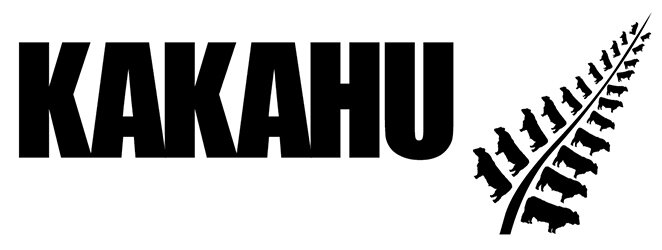$Profit®
Leachman Cattle of Colorado is excited to offer genetic predictions on the Kakahu Angus herd.
$Profit factors in all of the effects on both income and expense, to come up with a net profit figure for each bull. $Profit allows you to compare any two bulls and calculate the difference in profit that they are expected to generate within your herd.
Let’s compare a $10,000 $Profit bull to $6,000 $Profit bull (the average 2015 born American Angus Association bull). The predicted difference between the bulls is $4,000 or about $40 per calf.

1.3 million cattle... One index... $Profit®
How $Profit works…
As customers of Kakahu, you are tapping into one of the largest and most accurate multi-breed databases for temperate region cattle in the world. The Leachman analysis currently includes over 1,200,000 animals worldwide. While some analyses are larger, they lack the quality control found in the Leachman system as data is only accepted from top tier Seedstock producers who are engaged in full herd performance testing. This includes leading US breeders such as Thomas Angus Ranch in Oregon, R A Brown Ranch in Texas, and Ludvigson Stock Farm in Montana as well as Rissington here in New Zealand. The database also includes the composite cattle in the UK, Australia, and North America. Most interestingly, each of these herds are collecting feed intake data on thousands of animals per year. This makes the Leachman database especially powerful at predicting feed intake in Angus, Simmental, Gelbvieh, South Devon, and composite populations. Today, dozens of leading breeders around the world are using $Profit to produce higher productivity animals. The Leachman database is further backed by years of research and development investment. The database currently contains over 30,000 feed intake records and over 50,000 mature cow weight observations. The investment in this data alone exceeds US$2,000,000. Leachman first started validating the heritability of feed conversion in steers being fattened in 2010. Since that time, thousands of AI sired progeny have been produced in structured contemporary groups to evaluate growth, conversion, and carcass merit. In addition, the Leachman database utilizes breed EPD’s (equivalent to EBV’s) from the American Angus Association, the American Simmental Association, and the American Gelbvieh Association to increase the accuracy of outside sire lines that are being sampled each year. This combination of top quality herds, complete data recording, leveraging of breed genetic predictions, and extensive validation testing is unique. We welcome you to inquire more about $Profit and the other indexes now being offered by Kakahu via its global alliance with Leachman Cattle of Colorado. We feel that this will add huge value to our selection decisions and the bottom line of our commercial bull customers.
Why $Profit?
Today, stockmen have to make proper genetic decisions to improve profitability and the return on their farms. However, most beef seed stock providers either provide too little data or too much data. Most performance recorded animals have over 20 EBVs on traits ranging from growth to carcass. This makes buying the best bull very difficult. Every bull is good on some traits and weak on others. The challenge is figuring out how each of those traits is going to impact your bottom line. We wish we knew which bull would make the most money from birth to slaughter, but most of the time, we end up guessing. Back in 2005, Leachman Cattle of Colorado decided that they didn’t want to guess any more. A partner of Lee Leachman’s asked him to come up with one number that sorted the bulls on their bottom line impact – so they did. Since then, Leachman has provided $Profit on all bulls they sell. Furthermore, they are basing almost all of their own selection decisions on $Profit. Literally, they are putting their money where their mouth is. Lee Leachman tells the story of two bulls that he bought a few years ago from the same sale. Both bulls had complete performance data, ratios, ultrasound, and even feed efficiency data. They were both the same breed. After the sale, Leachman added that herd’s data into the Leachman database to calculate EBV’s and $Profit. One bull came out at $8,374 and the other came out at $14,258. That is a huge difference – one bull was a great buy and the other was an expensive mistake.
How $Profit works
$Profit assumes that the average commercial bull will have 100 progeny over its lifetime. The model assumes that you keep 30% of your heifers as replacements and that you retain ownership on the remainder of the calves through finishing and sale on a value based marketing grid for carcass merit. This grid rewards both beef quality (marbling) and red meat yield. We realise that many don’t retain ownership to slaughter, but even if you sell store you want to be known for someone with high quality cattle and be able to demand a good price. An advanced simulation model, developed by Dr. Steve Miller and other geneticists at Guelph University, is used to develop partial budgets. The model factors in all of the effects on both income and expense to come up with a net profit figure for each bull. $Profit allows you to compare any two bulls and calculate the difference in profit that they are expected to generate in your herd. Let’s compare a $10,000 $Profit bull to $6,000 $Profit bull (the average 2015 born American Angus Association bull). The predicted difference between the bulls is $4,000 or about $40 per calf. $Profit works for us and it will work for you too.
$Profit includes nearly every trait that impacts profitability
The effect of most traits on profit is fairly simple to understand. Here is the list of what is included and its effect: Revenue Traits • Calving ease = more calves means more revenue. • 200 Day Weight & 400 Day Weight EBV = more weight equals more revenue. • Fertility (days to conception) = more weight and more calves Carcass weight = worth more revenue. • Marbling = valued based on grid premiums • Eye muscle area = value as impacts yield grade • % Retail Product = more yield is more saleable meat Cost Traits • Cow mature size = bigger eats & costs more • Cow intake = more intake eats & costs more • Feedlot feed efficiency = more feed per kg of gain means more cost Some traits are not so easily characterized for $Profit. Milk, for example, is a good thing until you get too much. When over +25, milk EBV has a more negative effect on fertility than it has a positive effect on weaning weight. There are a few traits not yet included in $Profit: longevity, structure, and disposition. These traits are important but difficult to express in dollars.
Feed Efficiency & Feed Intake explained
Feed Efficiency is the difference in the amount of feed a bull’s progeny will consume to produce one kilogram of weight gain. Example: A -0.50 F:G EBV means this animal’s progeny will consume 1/2 kilogram less feed per kilogram of weight gain than would progeny of a zero F:G EBV sire. Feed Intake is the difference in feed consumption of each of a bull’s progeny in a 112 day finishing period. Example: A steer whose sire has a -100 Intake EBV will eat less feed in 112 days than one whose sire had a zero Intake EBV.

